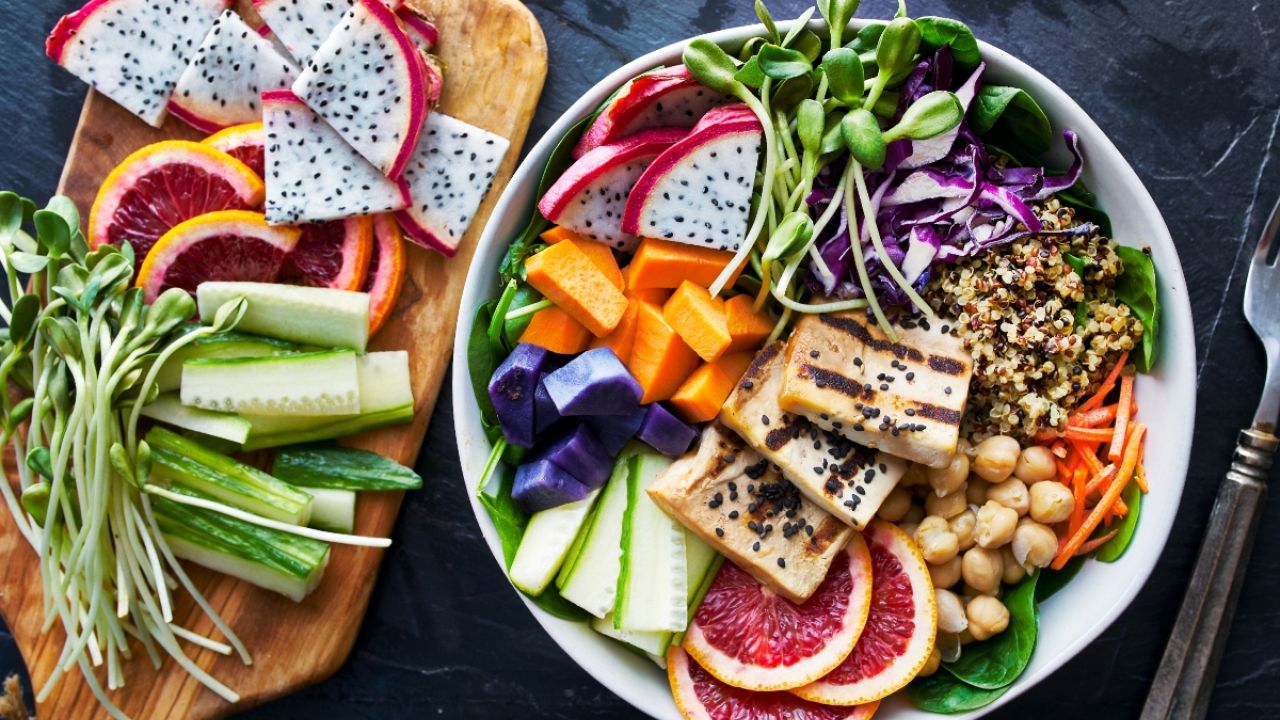
EWG presents a series of guest articles by Culinary Nutritionist and Author of “What the Fork Are You Eating?” Stefanie Sacks exploring the link between a healthier diet and a healthier environment while offering straightforward advice and encouragement to anyone looking to improve their nutrition and protect the planet.
By the time my older son, Jack, was 4 years old, he often served as dinnertime sous chef. One evening, cowgirl chili was on tap. With all the veggies prepped and gently sizzling in the pot, I opened the cans of beans to rinse them.
But my little guy got to them first. Instead of putting the beans in a strainer and running them under cold water – necessary for removing the starchy soaking liquid – he dumped both cans, liquid and all, straight into the pot. The result was an inedible type of chili “mucous.”
I know, gross! But as I always tell my kids, we learn the most from our mistakes.
When you start getting your hands dirty with plant foods, you may also stumble at first. But remember that reshaping how we eat is a process, so be patient with yourself.
Diving into creative ways to cook all plant foods, rather than just one type, can be an ideal start. But years of teaching people how to cook made me realize: Most people struggle with plant protein. My goal is to help you launch into legumes – simply, nutritiously and deliciously.
Beans
Rather than bombard you with a long list, I suggest getting started with one of my go-tos:
- Red, green or black lentils
- Garbanzo, also called chickpeas
- Black
- Kidney
- Pinto
- White (cannellini or navy)
How to buy
Legumes can usually be found dry, in bags and on grocery store shelves. Some stores sell beans in bulk – a better choice for reducing your carbon footprint. You can try your hand at soaking, boiling or pressure-cooking beans if you’re adventurous. If not, look for them in cans, boxes and jars.
Organic beans are best, but they’re not accessible to everyone, whether because of cost or availability. Alternatives like Goya are perfectly fine. (Goya makes organic beans too, mostly found in cans versus dried.)
Some of my favorite places to buy beans are big box and discount stores, as many sell the organic variety. I also purchase them online, where you can find the organic sort at an amazing discount. Wherever you buy them, make sure to read the ingredients label, since not all beans are created equal. Many contain disodium EDTA, a chemical that’s considered safe for human consumption but isn’t necessary in food processing. There are plenty of options available without it.
Digging in
Lentils are low maintenance. They don’t need to be soaked, boiled for hours or pressure cooked. I use them in dips, like a lentil walnut paté, in soups like my lazy lentil soup, as the star attraction of a salad like lentil tabouli, and in stews, whether a chili or this savory lentil sloppy Joe wonder.
I tend to buy other beans in cans or boxes. Soaking and pressure-cooking doesn’t fit my schedule as the working mom of two active boys. And you should feel comfortable buying canned beans , too – just don’t make Jack’s mistake. Rinse beans before use (chickpeas are the only exception).
Some of my favorite dishes are dips like hummus or white bean spread; salads like greens and beans; black bean soup and other soups; stews like Thai chickpea curry; a super-easy bean burger; and even a Buddha bowl.
Tofu
Tofu is made by coagulating soy milk and pressing the curds into blocks. It’s available silken, soft, firm and extra firm.
How to buy
Tofu is usually refrigerated in the produce aisle or dairy section of the grocery store. Some tofu, usually the silken variety, comes in shelf-stable boxes in a store’s “international foods” section.
Digging in
Unless it’s in a shelf-stable box, tofu comes packaged in water. Before it’s cooked, the water must be drained and the tofu pressed to remove the excess liquid. The silken and soft sort don’t need much draining or pressing.
The softer versions are great as an egg replacement* or a dairy replacement, and for dressings like a creamy ranch; sauces like Alfredo; and desserts like chocolate pudding or pie filling. You can make dips, like this onion dip, or toss your favorite dried onion soup mix into a blender with silken or soft tofu, if that’s easier. It’s also a great protein addition to your favorite smoothie.
Coarser soft tofu can be used the same way as silken. It can also be used like a ricotta cheese to add protein and depth to any dish.
Firm and extra firm tofu are great marinated and cooked, like most animal protein. Firm and extra firm tofu both maintain their shape when cubed or sliced. Firm tofu absorbs marinades better than extra firm, but the latter holds its shape better when it’s stir-fried, sauteed or fried. Both can be used cubed in soups, or baked or roasted. Three of my own favorite recipes are tofu rambling scramble, tofu vegetable lasagna rolls, and tofu fajitas.
Soft, firm and extra firm tofu can be crumbled and used as a cheese substitute, flavored with herbs and spices.
If you don’t use the entire block of tofu for your recipe, make sure to partly cover the rest with fresh water in an airtight container. You’ll have to change the soaking liquid every two to three days to keep it fresh.
Tempeh
Tempeh is made from whole fermented soybeans in a natural culturing and controlled fermenting process that binds soybeans into cake form. There are several varieties, sometimes made with other beans and even with grains. Some tempeh is flavored, typically with herbs and spices. Unlike tofu, tempeh comes vacuum-sealed without liquid.
How to buy
Since tempeh is made from soy, buying it is like buying tofu. The most common brand is sold plain, flavored and even cubed. You’ll find it in the produce aisle or dairy section.
Digging in
Aside from its high protein and fiber content, what I adore most about tempeh is its versatility. It can be ground and used as a swap for any chopped meat and cooked in much the same way, as with barbecue tempeh. You can use tempeh to make burgers. It can be cubed, marinated and cooked. It’s even possible to make yummy “bacon” with tempeh.
If you don’t use the entire block of tempeh, wrap what’s left tightly in parchment paper or a glass or stainless steel container to store.
This is a lot of information to digest so please know and trust that the slower you go, the faster you will get there. One step at a time! Change doesn’t happen overnight.
_____________________________________
* Substitute 1/4 cup tofu for one egg.



